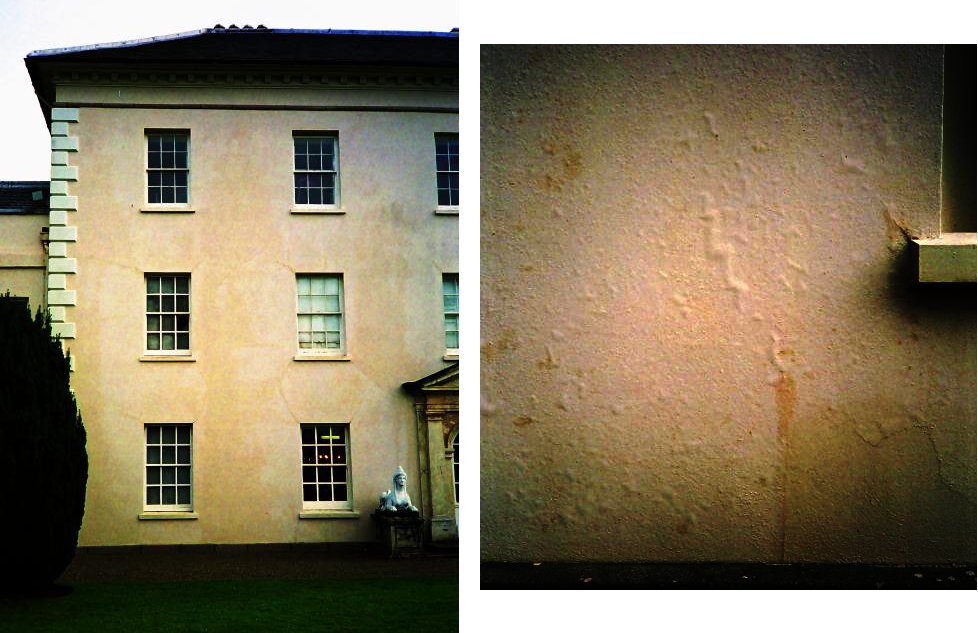
 |
Why do tea bags swell in hot water? |
The units used for describing water vapour in air are many, and confusing. One of these is vapour pressure. It is much misused by architects and building engineers talking of vapour pressure forcing water through walls and causing various bad things to happen. Water vapour moves through walls either by diffusion, which depends on a concentration gradient, not a pressure gradient, or by being entrained in a flow of air driven by a difference in total atmospheric pressure, unrelated to the vapour pressure of the water component. However, there are circumstances when the pressure of water vapour does indeed cause bad things to happen.
The first thing to understand is that air does not interact with water vapour at all. This was established in 1801 in Dalton's law of partial pressures, which states that gases intermingle, each exerting its own partial pressure, whose sum is the total pressure, which for most everyday circumstances is atmospheric pressure, about 101 kPa.
Tea bags were not around in Dalton's day so he could not use them as a demonstration of this law.

On the left of the picture is a dry tea bag, squashed down to expel much of the air in the bag, but obviously not all. In the middle, hot water is being poured over the tea bag and on the right is the wet tea bag swelled up to rotundity as it floats in the hot liquid.
At first thought, one might suppose that the air within the bag, trapped by the sudden invasion of water which forms an impermeable seal held in the interstices of the porous paper, has expanded because of the high temperature. However, that is evidently not quantitatively correct because air will only increase in volume by about 370/300, this being the ratio of the kelvin temperatures in the hot water and in the room. The volume of trapped air has clearly expanded by more than a quarter.
To explain the unexpectedly large swelling, let us look at the pressure exerted by the gases within the tea bag, at first assuming that it retains its initial flat state. The residual air will be exerting an increased pressure, about 125 kPa, due to the temperature increase. The water which forms the surface of the wetted tea bag, because it has invaded the fibrous pore structure, will alone exert the vapour pressure which prevails over a water surface at 90 °C. This is 70 kPa. It is defined by the temperature and the presence of a pure water surface, and is completely unaffected by the presence of air.
According to Dalton's law the vapour pressure of water in the mix of air and water vapour must now be renamed the partial vapour pressure. This must be added to the partial pressure of the air component, which gives a total pressure of 195 kPa. This is well above atmospheric pressure and the wet tea bag has no strength, so it will expand until the pressure within has fallen back close to 101kPa.
As the tea bag expands, the partial pressure of the air component will fall, according to the gas law which states that in a confined space pressure falls proportionately with increasing volume, at a constant temperature. However, the water vapour partial pressure will remain at 70 kPa as the volume increases, because extra water molecules will vaporise from the wet inner surface of the bag. The final volume of the bag, assuming a freely expandable construction, will be equal to the original air volume multiplied by the expansion required to reduce the partial vapour pressure of the air component to 31 kPa , so that the total pressure becomes 101 kPa. If there was originally 1 cc of air, the bag will expand to 101/31 = 3.3 cc. This will be the total gas volume, including the contribution from the water vapour.
We have the paradoxical result that water vapour alone would cause no expansion of the tea bag, if it were flattened at the beginning so as to exclude all air. This is because its vapour pressure is less than atmospheric pressure. The presence of air is necessary for the swelling, even though water vapour and air do not interact at all.
Does the tea bag swelling process have any significance in conservation? Yes it does. It is a potent cause of damage when heat is applied to any sealed space containing air and a wet surface. The historic house in south-west England shown below was surfaced with cement plaster and finished with a plastic paint of small permeability. Cracks formed in the cement render, which tore the paint, allowing driving rain to get between the cement and the paint. In the course of time, the paint to cement bond was sufficiently broken in places to allow a thin lens of air to form between wet cement and paint. The paint also has a certain water content. When this thin lens is heated by sunlight, typically to 70 °C, the tea-bag effect exerts its powerful expansion and the paint bubbles up.

The tea bag effect applies whenever heat is applied to a sealed space containing both air and a wet surface, or a water containing material. Using a heated spatula on a dampened painting for example. Evidently, heating above 100 °C will cause expansion because the water vapour pressure exceeds atmospheric pressure. But heating below this temperature will also cause dilatory pressure, if air and water surfaces are present in a confined space.
Next: Mixing Ratio and Absolute Humidity.

This work is licensed under a Creative Commons Attribution-Noncommercial-No Derivative Works 3.0 License.